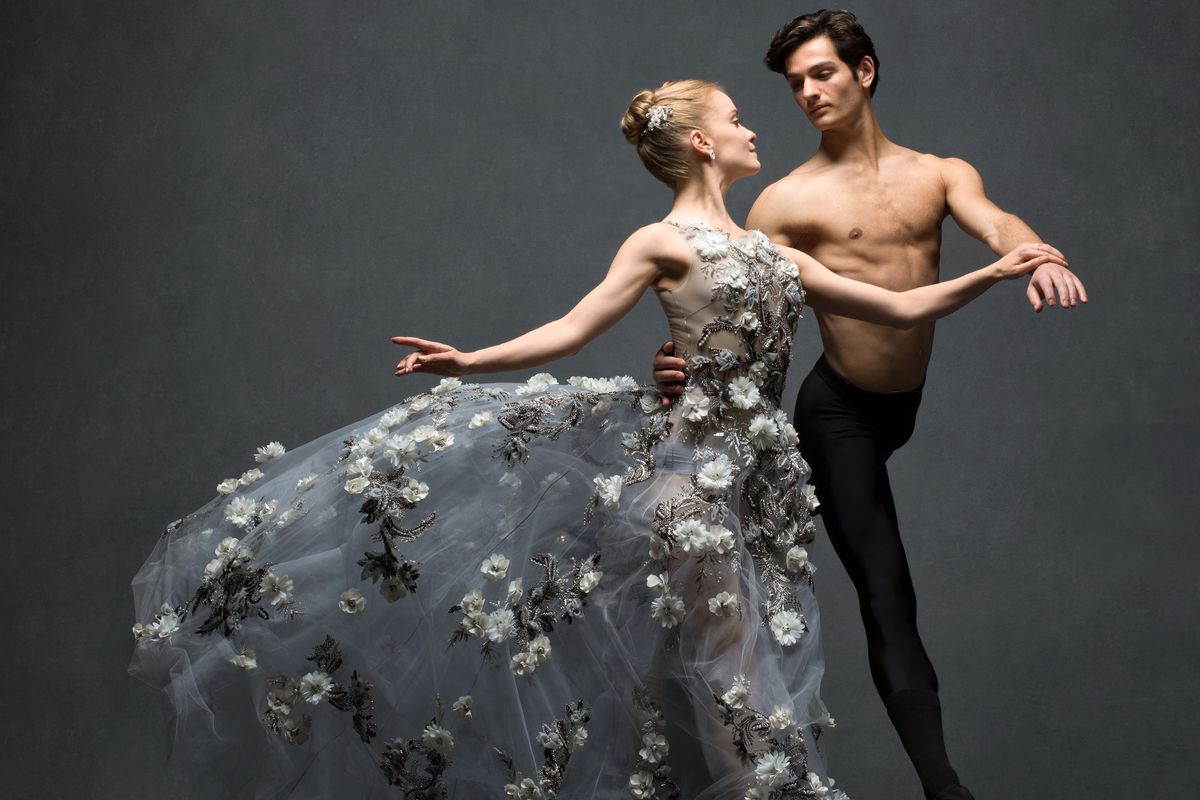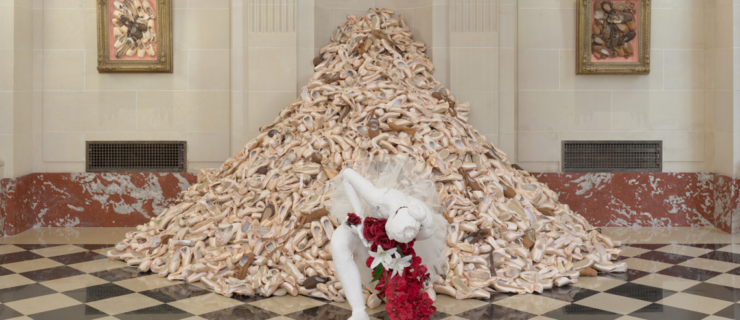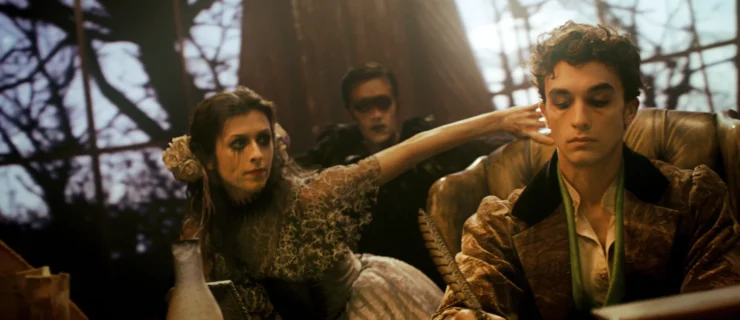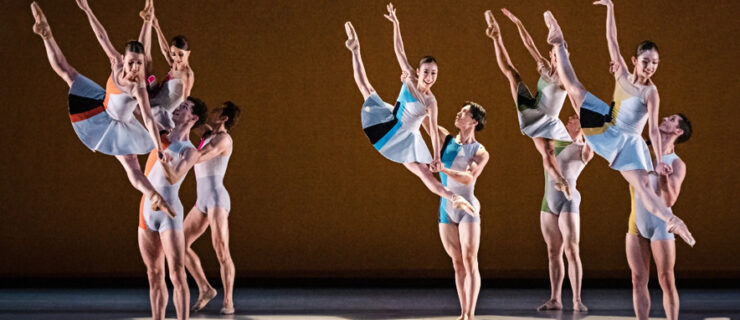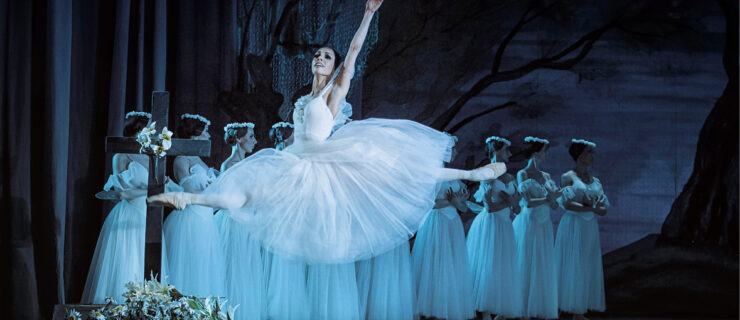Inside "The Style of Movement," The Gorgeous New Book by NYC Dance Project's Deborah Ory and Ken Browar
If you are a fan of photographers Deborah Ory and Ken Browar—the husband-and-wife team behind NYC Dance Project—get ready. This week, they released their second book, The Style of Movement: Fashion and Dance—and it’s stunning. The 305 page hardcover, a follow-up to their 2016 best-seller The Art of Movement, includes 250 photographs of world-class ballet and modern dancers showcasing couture gowns, jackets and trousers in a way only dancers can. The book features stars from companies like American Ballet Theatre, Bolshoi Ballet, Mariinsky Ballet, Martha Graham Dance Company and Alvin Ailey American Dance Theater wearing designers like Valentino, Oscar de la Renta, Dior and vintage Halston. (And yes, there is a calendar version, too!)
Both Ory and Browar have backgrounds in couture. Browar was a fashion and beauty photographer in Paris for 28 years; Ory, a former dancer who started photography after an injury sidelined her in college, worked as a magazine photo editor. They initially started taking their trademark studio portraits of dancers as a birthday gift for their daughter, then a young ballet student. Before long, NYC Dance Project was born. We spoke with Ory and Browar about the process behind their latest book, and what to expect from NYC Dance Project in the future.

Tiler Peck graces the cover of The Style of Movement: Fashion and Dance wearing a vintage Valentino gown.
Courtesy Rizzoli New York
In general, do dancers typically reach out to you to be photographed for NYC Dance Project, or do you reach out to them?
Deborah Ory:
Dancers have always reached out to us, since the beginning, or their friends have suggested they contact us—especially if they’re in town from Russia or something. And we go to the ballet and to see modern dance all the time, and if we see somebody we love we reach out to them.
With the designers in this book, it was a little bit different. That was mostly us reaching out—I was a photo editor at fashion magazines and had a lot of ideas about which designer’s clothes moved beautifully. Although a few, like Dior, found us.
What were the photo shoots for
The Style of Movement like?
Ken Brower:
We had shot most of the dancers before, so we already had a nice relationship with them. Also, we were working out of our home studio, with just Deborah and myself and maybe an assistant. We’d start with coffee and then go over to the clothes.
DO:
Before the shoot we would talk to the dancers quite a bit about what clothing they like and what their style is. Then once they came we would start trying on clothes and seeing what moved well. Once on set we would then have them improvise and experiment with movement for about an hour to see what worked well. Then we’d review pictures together to see what we really responded to and would fine-tune from there. At the end of the day we’re only looking for a few images.
KB:
We’re trying to capture a moment with movement—not to freeze the dancer but to capture a moment in their career, which is so short. This is something that they can show their children, pass on to family, from when they were at the height of their career.

Misty Copeland in Trash-Couture, from The Style of Movement: Fashion and Dance.
NYC Dance Project, Courtesy Rizzoli New York
How do you manage to get a good portrait while also capturing movement?
KB:
It never really works when dancers just do tricks or spins, because it’s too much to capture. So we bring it down to simple movements and just repeat it. If they are doing a jump, everything will just move up, so we try to direct it as not a twist or a trick, but more like a breath. It calms everything down in the face and hands.
Are there different challenges to shooting dancers in couture clothing?
What did you look for in the designs
?
DO:
We wanted clothing that had freedom and range of movement, so we looked to designers like Issey Miyaki, whose pieces move beautifully. Occasionally we’d get a piece that was difficult to move in but so special that we’d just do an arm gesture or something, because the garment was worth it. Often the clothes didn’t fit the dancers so we’d have to use clamps—everything is made for runway models, who can be extremely tall!

Royal Ballet soloist Meaghan Grace Hinkis in a flower dress made by Madeleine Hinkis, with floral design by Olga Sahraoui. From The Style of Movement: Fashion and Dance.
NYC Dance Project, Courtesy Rizzoli New York
There’s one gorgeous dress in the book that is made entirely of flowers.
DO:
It’s an homage to Alexander McQueen, who is one of my favorite designers. His work is so theatrical. He had made a dress made of flowers, and as the model was walking down the runway they were falling off. I knew we couldn’t use the piece, obviously, so we made a new one. We had to make it on the dancer, who was very brave! Her mom is one of the costume designers for ABT, so we had her and a floral designer build it. It took hours—we had hundreds of flowers in our house.
In the book you talk a lot about how Martha Graham was hugely influential in bringing together dance and fashion.
DO:
Yes, we feature the costumes from Night Journey, which she herself designed. She did many collaborations with designers like Halston and Calvin Klein, and fashion was very much a part of her work—like the way she uses the costume in Lamentation. And the creative director at Dior has talked about being influenced by Graham.

Daniil Simkin in a vintage suit by Comme des Garçons, from The Style of Movement: Fashion and Dance.
NYC Dance Project, Courtesy Rizzoli New York
Were the fashion designers surprised by the results of your work?
DO:
I think they’re really excited about it—they’re used to seeing their work on models, and this is very different. The dancers brought these pieces to life in ways none of us had seen before.
KB:
They bring line and shape to the clothes.
Right after you handed in the manuscript and photography files to the publisher, a fire in your building destroyed your studio. Will NYC Dance Project continue?
KB:
Yes. We’ve relocated, and nobody was hurt, but it’s sort of a closure of shooting in that studio.
DO:
Our focus will probably change a little—maybe we’ll do more location shoots or work outdoors. If we got another studio I think we would change the look a bit, because this was a special moment in time.
To celebrate the publication of
The Style of Movement: Fashion and Dance, Rizzoli Bookstore in New York City will be hosting a panel discussion with Ory and Browar, as well as ABT dancers Gillian Murphy and Alexandre Hammoudi and Martha Graham Company dancer Charlotte Landreau, on October 1 at 6:00 pm. Click here for more information on how to attend.
